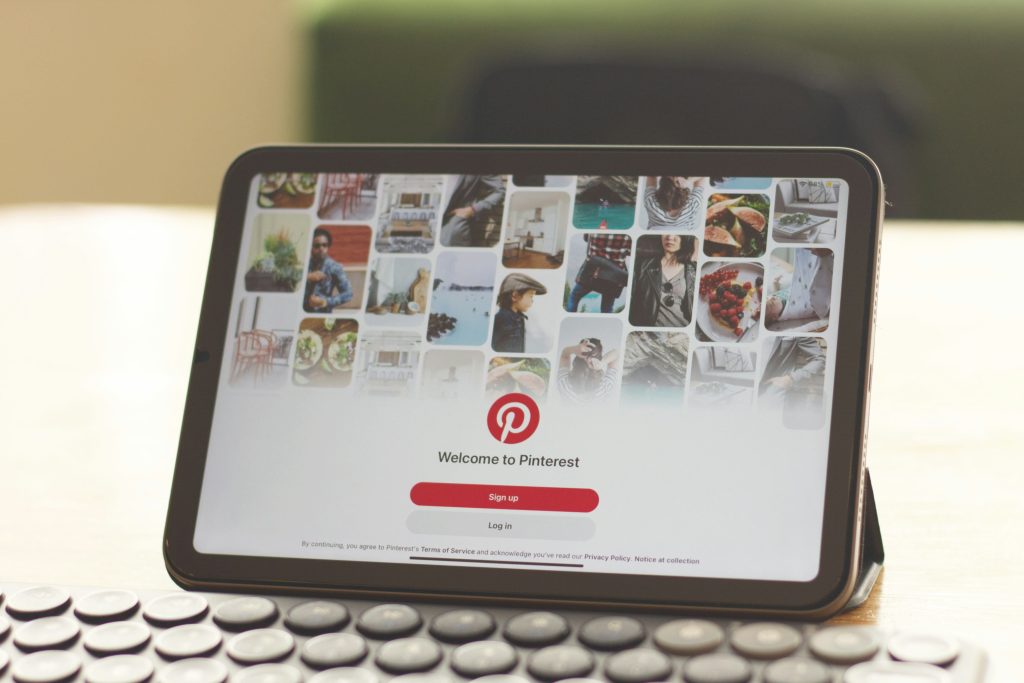
22 Sep Social Media Tips for Authors: Grow Your Audience and Book Reach
INTRODUCTION
The role of social media in book marketing has transformed dramatically in recent years. No longer limited to traditional publishers or bookstores, authors now have the power to connect directly with readers worldwide through digital platforms. Social media allows writers to create visibility, showcase their personalities, and build communities of loyal fans who eagerly anticipate their next release.
For authors, leveraging these platforms is not optional—it is essential. With millions of books published annually, standing out in a crowded market requires more than a compelling story. Visibility is the cornerstone of success, and social media provides the tools to reach the right audience. However, this comes with challenges such as algorithm changes, audience saturation, and the pressure to consistently create fresh content.
This guide provides authors with actionable, practical strategies for every stage of book promotion. Instead of case studies, it focuses on universally applicable tactics that help writers establish their brand, engage readers, and adapt to the ever-evolving digital landscape.
Foundational Principles of Social Media Marketing for Authors
Author Brand Development
The first step in effective social media marketing is developing a clear and consistent author brand. This goes beyond simply sharing book updates—it involves creating a recognizable voice and persona that reflects your unique writing style. For example, a thriller author might adopt a mysterious or suspenseful tone, while a romance author might lean into warmth and emotional connection. Aligning your social media presence with your genre ensures readers know what to expect and helps attract the right audience.
Audience Identification
Equally important is knowing your audience. Authors should define target reader demographics by considering age, interests, and online behavior. A young adult (YA) novelist, for example, might focus on TikTok and Instagram where younger readers are highly active, while a non-fiction writer could find more success on LinkedIn or X. Tailoring content to match reader preferences ensures higher engagement and better results.
Platform Selection
Not all platforms are created equal, and selecting the right ones can make or break your strategy. Facebook excels in building communities and hosting events, Instagram thrives on visual storytelling, and TikTok dominates short-form video trends. X offers real-time conversations and networking opportunities, while LinkedIn provides a professional space for non-fiction or academic audiences. Authors should carefully evaluate their time, resources, and audience alignment before committing to platforms, prioritizing those that deliver the most value.
Pre-Launch Strategies: Building Anticipation
Building anticipation months before release ensures readers are invested in your book journey. A content calendar spanning three to six months helps maintain consistency and balance between promotional and value-driven posts. Following the 80/20 rule—80% engaging, informative, or entertaining content and 20% promotional—keeps audiences interested without overwhelming them.
Teasers play a key role in sparking excitement. Cover reveals, excerpt snippets, and character introductions allow readers to feel part of the creative process. Interactive elements such as polls, Q\&As, or “ask the author” sessions foster community involvement, making readers feel like collaborators rather than passive consumers.
Community cultivation is equally crucial. Dedicated groups on platforms like Facebook or Discord allow authors to nurture deeper relationships with readers. Partnering with book bloggers, influencers, or reviewers can also generate early buzz and help reach wider audiences.
Launch-Phase Strategies: Maximizing Impact
When launch day arrives, a coordinated multi-platform campaign can maximize visibility. Scheduling posts across different platforms ensures your audience sees your announcement wherever they are, while tailoring content for each channel increases effectiveness. For instance, TikTok book trailers may attract new readers, while Instagram Live readings provide an intimate experience for fans.
Amplification techniques such as using genre-specific hashtags like #RomanceReads or #SciFiFiction expand reach beyond your existing followers. Encouraging user-generated content—like fan art, unboxing videos, or personal reviews—further amplifies your launch by turning readers into advocates.
Collaborations can also make a big difference. Cross-promotions with fellow authors introduce your work to new readers, while virtual launch events via Instagram Live, Facebook Live, or X Spaces create excitement and give readers direct access to you.
Post-Launch Strategies: Sustaining Momentum
The work doesn’t end after release. Sustaining momentum requires ongoing engagement. Sharing reader reviews or testimonials (with permission) not only validates your work but also inspires others to read. Behind-the-scenes content, such as writing insights or research discoveries, deepens the reader-author connection.
Long-term relationship building is key to retaining readers. Offering exclusive content like bonus chapters, deleted scenes, or special newsletters rewards loyal followers and keeps them engaged. Consistently responding to comments, hosting discussions, or acknowledging reader contributions builds a lasting community around your books.
Monitoring data and analytics helps refine future strategies. Tracking engagement rates, click-throughs, and conversions allows authors to identify what works best. Adjusting posting schedules, experimenting with new content types, and analyzing audience behavior ensure continuous growth and improvement.
Advanced Tactics for Growth
For authors ready to take their social media presence to the next level, advanced strategies can significantly boost visibility. Paid advertising on Facebook or Instagram, when properly targeted, ensures your book reaches specific reader segments. Boosting high-performing posts can also extend their lifespan and reach new audiences.
Content innovation keeps readers interested. Experimenting with emerging formats like Instagram Reels, TikTok challenges, or interactive stories helps your content stay relevant. Repurposing content across platforms—such as turning a blog post into a X thread or a YouTube video—maximizes efficiency and expands reach.
Networking within literary communities builds authority and credibility. Engaging with groups like the #WritingCommunity on X or sharing valuable resources establishes you as both an author and a thought leader. Offering writing tips or industry insights enhances your reputation and creates trust with followers.
Common Pitfalls and Solutions
Authors often fall into common traps that hinder their marketing success. Over-promotion is one of the biggest risks, as constant sales pitches can drive followers away. Instead, balance promotional efforts with authentic, value-driven content that entertains, educates, or inspires.
Inconsistency is another pitfall. Irregular posting reduces visibility and weakens audience trust. The solution lies in batch-creating content and using scheduling tools to maintain a consistent online presence.
Finally, spreading yourself too thin across too many platforms can dilute results. Focusing on two or three high-impact platforms ensures you deliver quality engagement without exhausting your resources.
CONCLUSION
Social media marketing for authors is about more than just promotion—it is about creating meaningful connections with readers. By developing a strong author brand, identifying target audiences, and choosing the right platforms, writers can effectively amplify their voices. From pre-launch anticipation to sustaining momentum after release, success lies in strategy, consistency, and adaptability.
Above all, authenticity matters. Readers are drawn to authors who engage genuinely, share openly, and foster communities built on trust. Start small, measure your results, and refine your approach over time. With persistence and creativity, social media can become one of the most powerful tools for growing your literary career.
KEY TAKEAWAYS
- Develop a strong author brand: Build a consistent voice and persona that reflects your genre and writing style. This makes your presence recognizable and helps readers connect with you beyond just your books.
- Identify and understand your audience: Knowing who your readers are—their age, interests, and online habits—ensures your content appears where they already spend time. Tailoring your posts to their preferences increases engagement and loyalty.
- Choose the right social media platforms: Each platform has strengths—Instagram for visuals, TikTok for short videos, Facebook for communities, LinkedIn for non-fiction. Focus on the ones that align best with your goals and readership.
- Create pre-launch excitement: Use teasers, cover reveals, excerpts, and interactive content like polls or Q\&As months before your book release. Consistency and anticipation help turn casual followers into excited future readers.
- Maximize launch-day visibility: Plan a coordinated, multi-platform release. Leverage hashtags, cross-promotions, live events, and encourage fans to share their own content like reviews or unboxings to broaden your reach.
- Keep momentum after launch: Share reader testimonials, behind-the-scenes insights, and offer exclusive content like bonus chapters or special newsletters. These deepen the reader-author bond and keep your audience invested.
- Use advanced growth strategies: Experiment with paid ads to target specific readers, repurpose content across platforms for efficiency, and stay innovative with new formats like Reels or TikTok challenges. Networking within writing communities boosts authority.
- Avoid common pitfalls: Don’t overwhelm followers with constant self-promotion—balance it with valuable, authentic content. Stay consistent with your posting schedule, and avoid spreading yourself too thin by focusing only on platforms that bring the best results.
FAQ
Why is social media essential for authors today?
Social media is essential because it allows authors to reach global audiences without relying solely on publishers or bookstores. It builds visibility, helps establish a personal brand, and nurtures communities of loyal readers who support current and future books, making it a vital marketing tool.
Which social media platform is best for authors?
The best platform depends on your audience and genre. For example, TikTok and Instagram work well for younger readers, while Facebook excels at community-building, and LinkedIn suits non-fiction authors. Choosing two or three aligned platforms ensures stronger engagement without spreading your efforts too thin.
How can authors maintain momentum after a book launch?
Momentum continues by engaging readers beyond release day. Sharing reviews, behind-the-scenes content, or bonus material keeps interest alive. Consistent interaction, exclusive content, and listening to audience feedback build long-term loyalty, ensuring readers remain invested not only in your current book but also future projects.
If you’re a new author dreaming of getting published, the journey can feel overwhelming. This article walks you through the role of literary agents, how to find the right one, and why they are essential in helping you navigate the publishing world.



